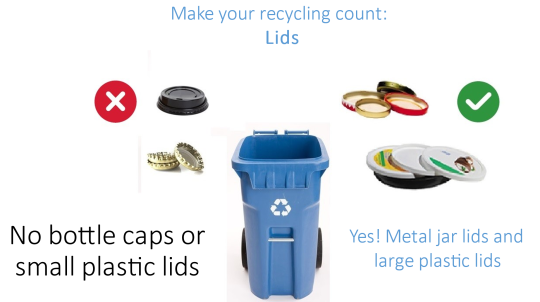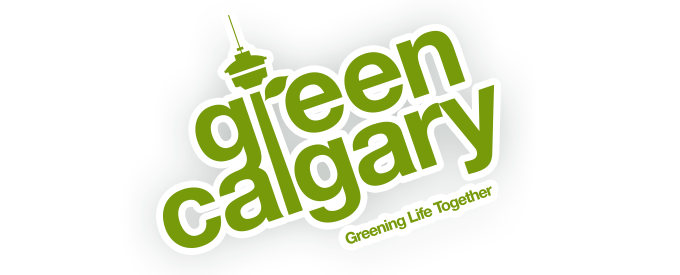Myth Busting: Why can’t I recycle my coffee lids?
Posted on June 30, 2023
We get asked this a lot. There is a recycle symbol on the lids, so they go in the blue cart, correct? It’s a good question, along with many other good questions. To help streamline some of these answers, I spoke with the City of Calgary’s waste and recycling team—the horses-mouth, so to speak—to get answers for common plastic recycling inquiries with hopes we can help make recycling plastics at home a little easier. Before I begin, it is important to note that any time you are looking for recycling information, make sure the information is relevant to your municipality or workplace hauler. What I say here may not be relevant to someone in Edmonton and something written for Niagara may not be relevant to Calgary. In an office setting, follow the guidelines provided by the hauler. If these have not been provided to you, talk to your building manager.
Why can’t I recycle my coffee lid? The simple answer is the lids for coffee cups and fountain drinks are too light and often end up either flying off the truck when the load is dumped at the facility or floating off the machines and onto the floor. The recycling process the city uses is mostly automated (I highly recommend watching the video. It's pretty cool). This helps streamline the whole process and increase efficiency, but unfortunately when it comes to these very light lids, the automation system isn’t able to ensure they will be recycled and the time it takes workers to clean up the mess is time that could be spent processing the rest of the recycling materials. Other plastic lids are okay though. Heavier lids from items such as yogurt containers can be placed in the blue bin. For these lids, there is a “palm of the hand” guide that can help you determine if it’s too small. Anything larger than the palm of an adult hand (remember I said guide; don’t get caught up in dissecting the average adult palm size) can be recycled in your blue cart. See this photo from the City of Calgary for reference:

Why are small metal lids on the list? Metal is picked up by a magnet and so these smaller, heavier items don’t get lost in the system the way small, light plastics do. If you are someone who has a lot of metal bottle caps, I have a trick I learned from the waste and recycling team for you: Collect these items into a metal soup can and on blue cart day, pinch it closed tight so nothing falls out, and send it off with the rest of your recycling for pick-up!
Plastic bags recycling comes with one rule we need to follow if we want to keep our recycling system running smooth and efficiently. It is simple but important: BUNDLE. Bundling your plastic bags into one plastic bag, tied off, ensures that the plastic bags get recycled. Bags that are left loose will, at best, end up on the floor to be swept up, and at worst, get caught in the equipment and cause problems, such as delays in processing. Any stretchy plastic can be bundled for recycling. What about the stickers on bread bags? Leave them as is and bundle those, too. There is no need to cut labels off or, worse, get frustrated with the process and toss the whole bag into the waste bin.
Next, let’s talk about beverage containers. Though the city will take them to the bottle depot, it is actually preferred these items are not added to your blue cart. The city encourages you to take your own bottles in for the refund. Don’t feel the return is worth your time at the depot? Donate to a bottle drive or create an account with Skip the Depot. Skip the Depot picks up your empties and takes them to the depot for you. You choose between depositing the money into your own account or donating the refund to one of the charities listed at check out (Green Calgary is on that list). If you do end up using the blue cart to dispose of your refundables, please ensure all lids are removed first. A plastic lid screwed onto a plastic bottle does not mean it will get recycled (they are different types of plastic) and it can become a hazard in the processing stage if the bottle is squished and the air pressure causes the cap to projectile off the bottle. Let’s keep everyone safe out there!
Clamshells, yes, they are being recycled. Please put them in your blue cart.
Other household plastic containers can be recycled after they are empty and rinsed out. We don’t mean squeaky clean; the intent is not to waste a lot of water cleaning shampoo or detergent from bottles. Most household items can be rinsed out with their last use. For example, when the shampoo bottle contents are almost done, add water from the shower or bath you are already having, shake it up and use on your hair. The same works for the last of the bleach, detergent, dish soap, etc. For harder items such as peanut butter or jam, I have found that after a good scrape with a knife, some hot water and a few really hard shakes with the lid on, most contents stuck to the sides of the jar will come loose. As a side note, but within the desire to keep water waste to a minimum, are labels. Leave them on. It is not expected that you will soak and scrub these items off, and they will not contaminate the recycling contents of your bin.
Rain Barrels and other industrial plastics. We just wrapped up our in–person rain barrel sales (they can still be ordered online or purchased at Golden Acres), and we got a lot of questions about what to do with old, unrepairable plastic rain barrels. There are 2 options in the city for recycling industrial plastic containers Great West Containers and Friendly Earth. Keep in mind some of the most common wear and tear areas of your rain barrel can be repaired. Green Calgary staff can help determine if your barrel can be repaired and connect you with Dirk, the manufacturer of our barrels, to do so.
Plastic no's are any other household plastic. The City of Calgary facilities are not equipped to handle plastics outside of container plastics. Wish-cycling is also not effective. Wish-cycling is when citizens put something in the blue cart with the thought that maybe it could somehow be recycled, even though the item is not on the “what goes where” list. The mostly automated system used to sort our recycling leaves little opportunity for separating these items and causes contamination. Contamination directly affects what can be bundled and sold to market, meaning all that work your tax dollars paid for ends up in the landfill anyway. To prevent this, it is important to stick to the list of items from the City’s website.
Still not sure sometimes? There are other disposal options for larger items or items you are unsure about, besides doing your own dump-run. Every year the City of Calgary partners with communities to host Community Cleanups. Check the website for a clean-up in or near your community.
Remember, every hour spent fixing or cleaning up after citizen’s recycling blunders is tax dollars spent less efficiently on waste and recycling’s overall budget. Test your sorting skills with this sorting game created by the City of Calgary. There are great resources offered by the city to help sort through the noise. What Goes Where is a great tool that everyone should know about. In the end, if the City says they can take it, they have a way to manage it. The system is designed to be efficient, and they will not accept material they can’t manage. If they say they don’t recycle it, then don’t recycle it.
For a few more great video resources to help better understand the waste and recycling system of Calgary, see these videos, below.
https://www.youtube.com/watch?v=92GHL9c9szo
Too Good to Waste: Calgary’s Waste Story
Carry on brave recyclers!
P.S We got a really good question from a citizen after this blog went out.
Q. There has to be a way that people could stack a pile of lids together to be able to recycle them if they were so inclined. That would lessen them blowing around the facility.
A. Hi Katrina, good question. Unfortunately, the logistics of recycling plastics makes it tough to bundle the lids in a way that does not cause other issues. Though it might seem one could put coffee lids into a container of the same plastic #, the reality is that the lids to most containers fall off easily between being dumped into the truck, transported, and then unloaded at the facility, which puts us back to the same issue of free-floating coffee lids. The recycling facility does not want lids left on items that won't fall off easily, as they can cause dangerous situations (plastic lid screwed onto plastic jar might be projected off the jar when squished due to pressure) or they would be a mixed material (plastic lid on glass jar). Further, plastics are not only sorted based on recycling # but also colour, and bundling would affect the contamination rate if lids were in a container that didn't have the same recycling profile. The best solutions are to use reusable coffee mugs whenever possible, to not use a coffee lid if sitting in (we realize this can be tougher when taking out, especially if driving, but if possible, we can also refuse a lid if taking that to-go coffee on a walk), or reuse the lid from a previous purchase a few times before sending it to the landfill.
